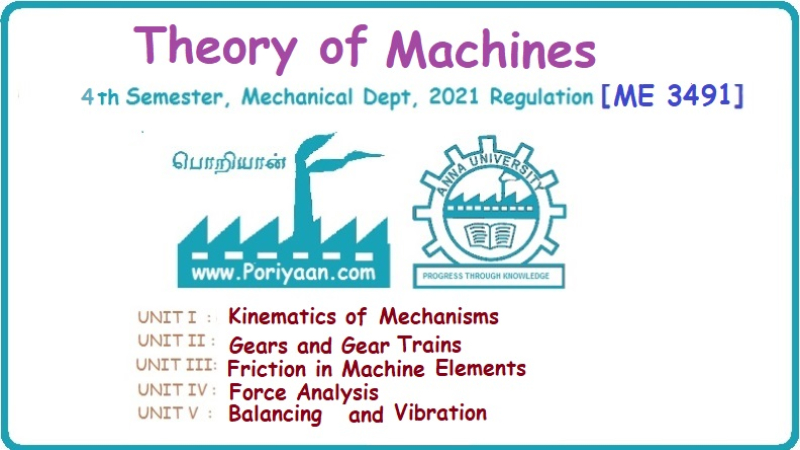Theory of Machines: Unit II: Gears and Gear Trains
Gear Trains
Gears and Gear Trains - Theory of Machines
A gear train is defined as a combination of gears that is used for transmitting motion from one shaft to another.
Chapter: 5 Gear Trains Learning Objectives While reading and after studying this chapter, you will be able to: • Understand the use of gear trains and explain the various types of gear trains. • Differentiate between simple and compound gear trains. • Understand the arrangement and the applications of reverted gear trains. • Appreciate the arrangement, advantages and the applications of epicyclic gear trains.. • Sketch and explain the sun and planet wheels arrangement. • Use tabulation and algebraic methods to determine velocity ratio of epicyclic gear trains. • Explain the various types of torques in an epicyclic gear train. SYLLABUS Gear trains - Types - Speed ratio and train value - Simple and compound gear trains – Reverted gear train - Epicyclic gear train - Velocity ratio calculation - Automotive transmission gear train. INTRODUCTION • A gear train is defined as a combination of gears that is used for transmitting motion from one shaft to another. • Gear train is necessary when it is required either to step up or step down the speed of driven shaft. However most applications use gear trains to obtain large speed reduction within a small space. • A gear train may use any or all types of gears spur, helical, bevel, and spiral. 1. Speed Ratio and Train Value of a Gear Train • Speed ratio may be defined as the ratio of the speed of the driving ear to the speed of the driven gear. • Mathematically, • Train value of a gear train may be defined as the ratio of the speed of the driven gear to the speed of the driving gear. • In other words, the reciprocal of speed ratio is known as the train value of the gear train. • Mathematically, • Sign convention: A positive sign of the velocity ratio indicates that the driver and driven gears are rotating in the same direction, and a negative sign indicates that they are rotating in the opposite direction.

Theory of Machines: Unit II: Gears and Gear Trains : Tag: : Gears and Gear Trains - Theory of Machines - Gear Trains
Related Topics
Related Subjects
Theory of Machines
ME3491 4th semester Mechanical Dept | 2021 Regulation | 4th Semester Mechanical Dept 2021 Regulation
